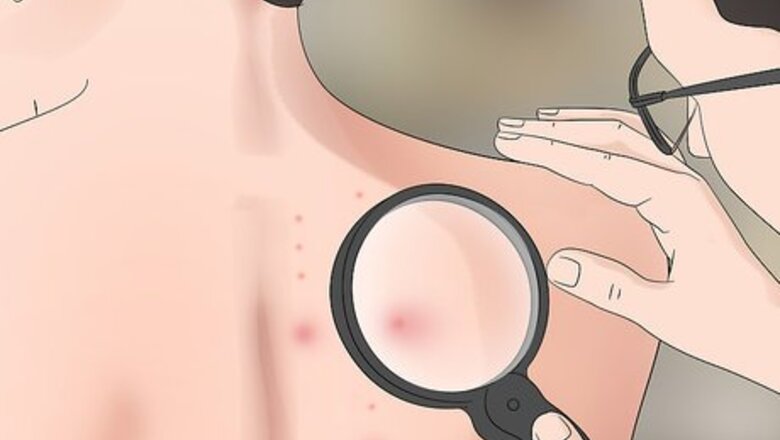
views
Taking Safety Precautions
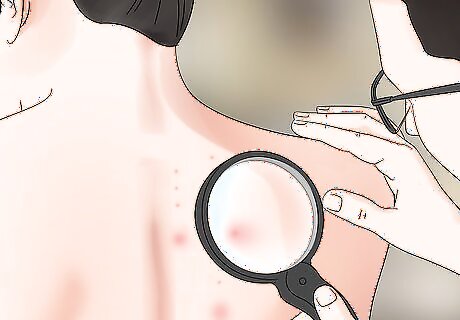
See a doctor to determine if you're allergic to hornets. If you haven't been stung by a hornet before, schedule an allergy test with your primary doctor before you try to take down the nest. They will test to see if you have any severe reactions to hornet venom. If your doctor confirms you aren't allergic, you can consider removing the nest on your own. If you are allergic to hornets, do not take down the nest yourself. Call a professional exterminator or ask someone else to take it down for you.
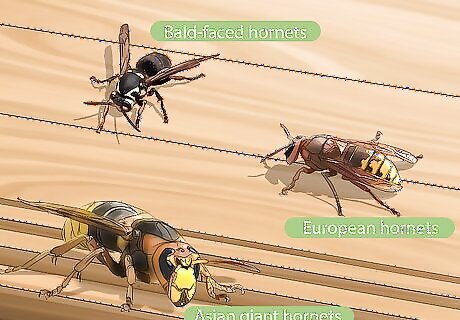
Determine what kind of hornets you're dealing with. Hornets build their nests the same way, but some species are more aggressive than others. Look at the appearance of each hornet to determine what type you're dealing with. Bald-faced hornets are the most common hornets in North America. The hornet's body is mostly black with white markings on their abdomen and head. Their nests are usually found at least 3 feet (0.91 m) off the ground and are primarily gray in color. European hornets are common hornets in North America and Europe. Their bodies are yellow and red, and they can grow up to 1 inch (2.5 cm) in length. Their nests are usually in a hollow tree or wall void 6 feet (1.8 m) off the ground. Asian giant hornets/murder hornets are the largest hornet species that are primarily found in Asia and are extremely aggressive. Their bodies are orange and brown and can grow up to 2 inches (5.1 cm) in length. The Asian giant hornets' nests are usually underground or in tree cavities.
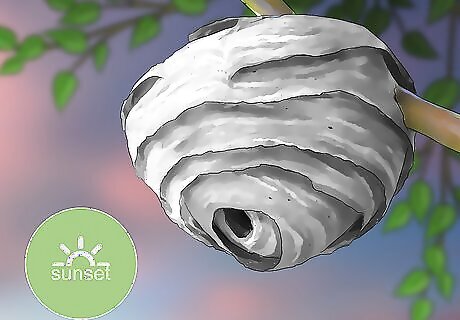
Plan to kill the nest at sunset. Attack the nest when right at sunset or at night so most of the colony is inside. Hornets are less active at night and there will be less of a chance that you'll get stung when you try to remove it.
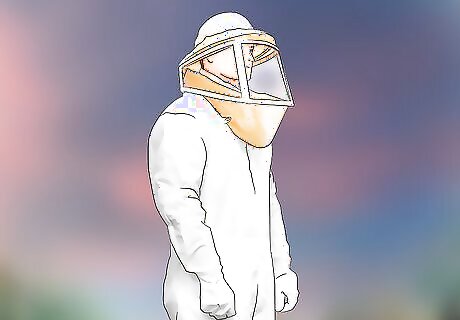
Wear protective clothing to prevent stings. Wear long sleeves and pants to keep hornets out of your clothes. Wrap a scarf around your head or tighten a hood around your face to protect your neck. Cover your face with safety goggles and a facemask. Tuck your pant legs into your socks or boots and wear thick gloves to protect your hands. Wear a beekeeping suit if you have access to one. These will protect you the best from hornet stings.
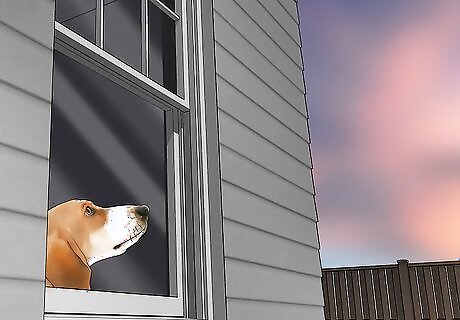
Keep pets and children inside when you kill the nest. The chemicals in the insecticides could harm animals or children, so make sure they are inside and the windows are closed. This also helps prevent them from being stung by any angry hornets when you attack the nest.
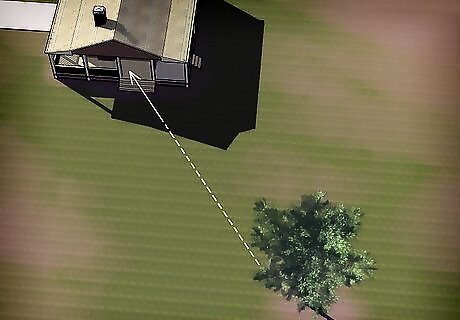
Plan a route to get away from the nest. When you spray a hornet's nest, the colony will start to swarm and come out of the entrance. Find a path leading back indoors so you can immediately flee once you apply the insecticide. Make sure there are no tripping hazards in the direction you plan on running.
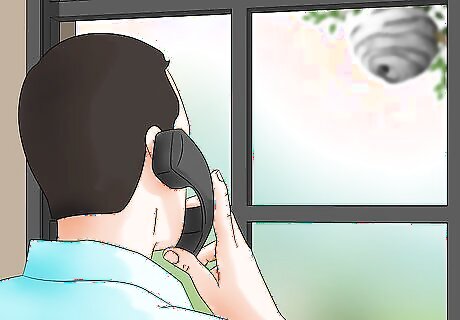
Call an exterminator if the nest is in a hard to reach place. If the nest is on a high branch or near your roof, don't attempt climbing up to reach the nest. Call a professional service and let them know about the hornet problem you're having. They will have more experience and be able to handle the nest. Don't stand on a ladder to remove the nest. If you fall off the ladder, you could hurt yourself and get stung.
Spraying the Nest with Dust
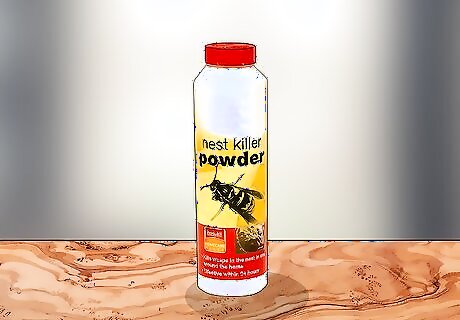
Purchase an insecticidal dust formula. Insecticidal dust coats the hornets in a water-repellent killer that prevents them from flying. The chemicals are then absorbed into their bodies to kill them in a short amount of time. Find an insecticidal dust meant for hornets or wasp control. Insecticidal dust is typically sold with a hand duster and can be purchased at your local yard care or gardening store.
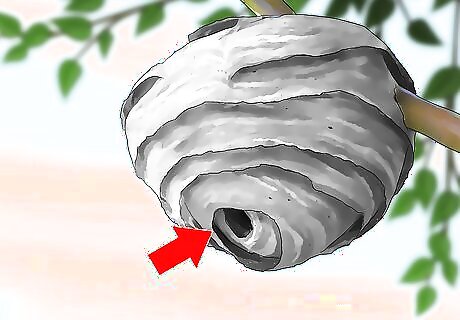
Locate the entrance hole on the bottom of the nest during the day. Look for a hole near the bottom of the nest that hornets are entering and exiting. This should be the only entrance on the nest and will be the area you want to focus on when you apply the dust. See if you can find another area on the nest where hornets are entering and exiting. This may indicate a second hole that you should spray.
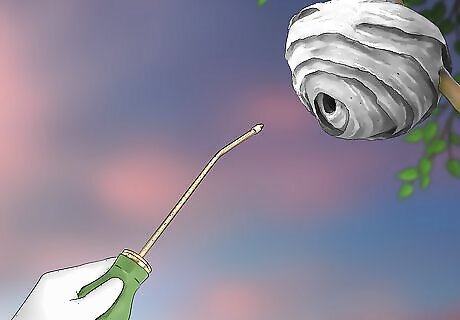
Place the end of the duster near the entrance of the nest at night. Once the sun has set, relocate the entrance again using a flashlight. Don't forget to wear your protective gear in case the hornets sting. Aim the duster directly at the hole. Don't aim your flashlight directly at the entrance hole or else you could disturb the hornets inside.
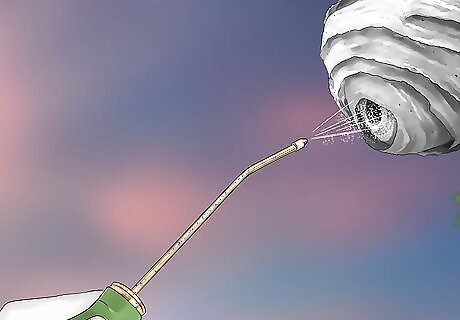
Squeeze the duster's bulb to coat the hornets. Use the bulb on the end of the duster to make the dust come out. Spray the outside of the entrance hole first before putting the tip inside. The dust will coat the hornets and the inside of the nest so it's more difficult for the hornets to move around. Once you've spread the dust, leave the area to prevent any stings. Some hornets will escape before they're covered in dust but they will return to the nest eventually.
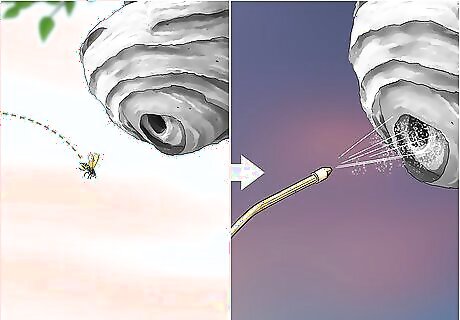
Dust the hornets again if you notice activity after 2 days. Revisit the nest after a few days to see if there are still any hornets entering or exiting. If some of the hornets are still active, do another dust treatment to kill any that survived. The dust usually works within 24 hours.
Using an Insecticide Spray
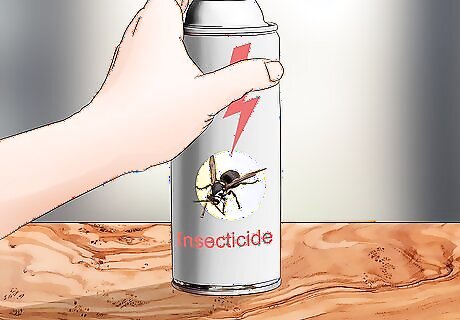
Buy an insecticide made for hornet removal. Look for aerosol cans with a powerful spray that shoots between 20–30 feet (6.1–9.1 m). Many of these insecticides will kill the hornets on contact so hornets that return to the nest will still die. Insecticides can be bought at your local yard care or gardening store.
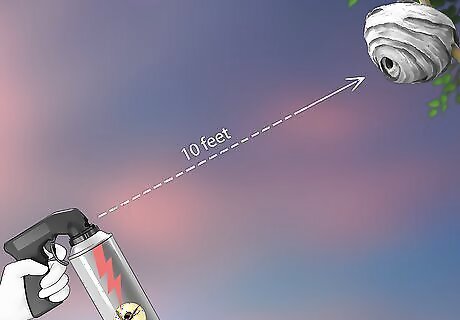
Aim the insecticide at the entrance of the hornet's nest. Stand at least 10 feet (3.0 m) back from the nest so hornets are less likely to sting you. Make sure the nozzle is pointed at the hole in the bottom of the hornet's nest since this is the main entrance and exit. Remember to wear your protective clothing and to spray the insecticide after sunset when most of the hornets will be dormant.
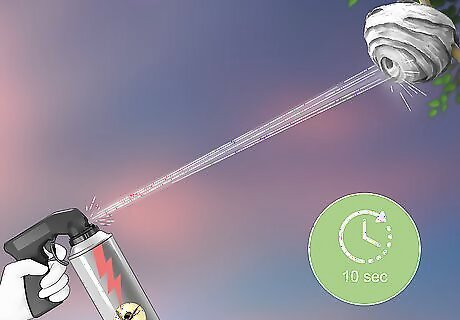
Spray the insecticide at the entrance for at least 10 seconds. Keep the insecticide pointed at the entrance hole while you spray. Coat the entire opening of the nest so hornets entering or exiting will die on contact. Once the hole is saturated, coat the rest of the nest before getting to a safe place. The hornets will start to swarm as soon as the nest is under attack. Focus on the entrance to prevent hornets from flying near you.
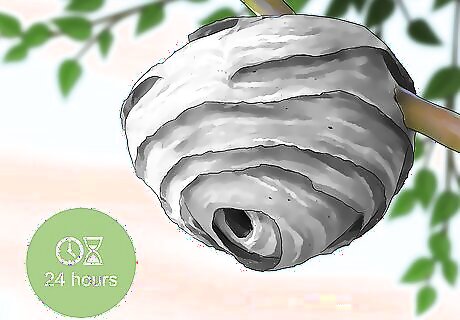
Wait 24 hours to see if any hornets survived and respray. Come back to the hornet nest the next day to see if there's any activity. If you notice hornets still swarming around the nest, apply another round of the insecticide to completely saturate the nest.
Removing the Nest
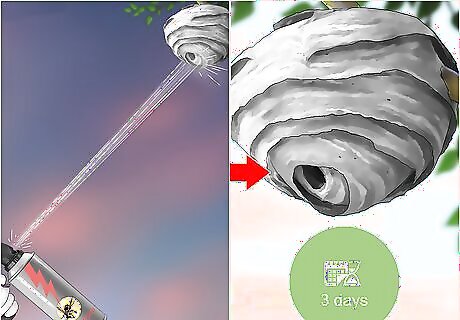
Wait 2-3 days after you apply an insecticide. Let the insecticide of your choice settle inside the nest so most, if not all, of the hornets die. After a few days, look for any activity around the nest. If there are no hornets flying around the nest, it's safe to remove. If you still notice hornets around the nest, use another application of your insecticide to kill them.
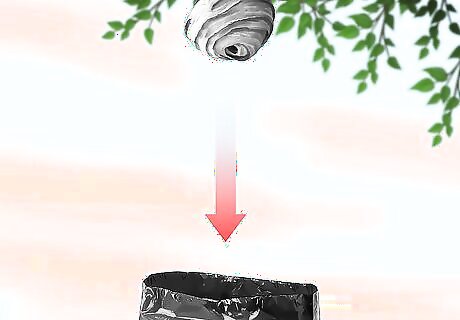
Put a garbage bag underneath the nest. Lay an open heavy-duty garbage bag directly underneath the nest so it falls inside when you remove it. If you want to, place the garbage bag in a bin so it's held open. Use a thick garbage bag meant for yard work if you can.
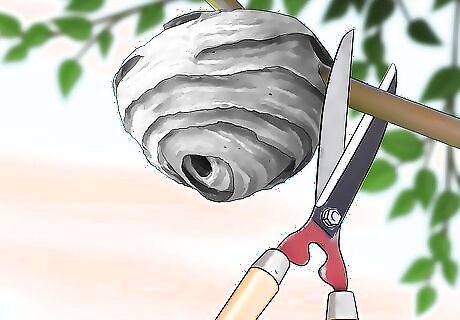
Use a scraper to remove the nest so it falls in the bag. Make sure the scraper has a handle long enough to reach the nest. Work around the edges of the nest to loosen it from the surface it's built on. Once the nest is loose, it should fall directly into the garbage bag below it. Scrapers can be purchased at your local hardware or homecare store. If the nest is hanging from a branch, use a pair of pruners to cut it off.
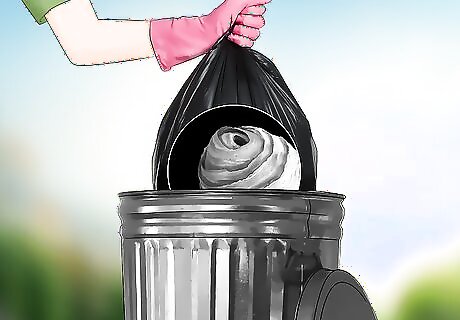
Tie the garbage bag tight so any surviving hornets can't escape. Make a knot in the garbage bag so the hornets are trapped inside. Once the bag is sealed, throw it directly in an outdoor trash bin. Thick plastic bags are too thick for the hornets to bite through.




















Comments
0 comment